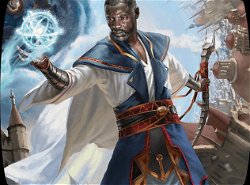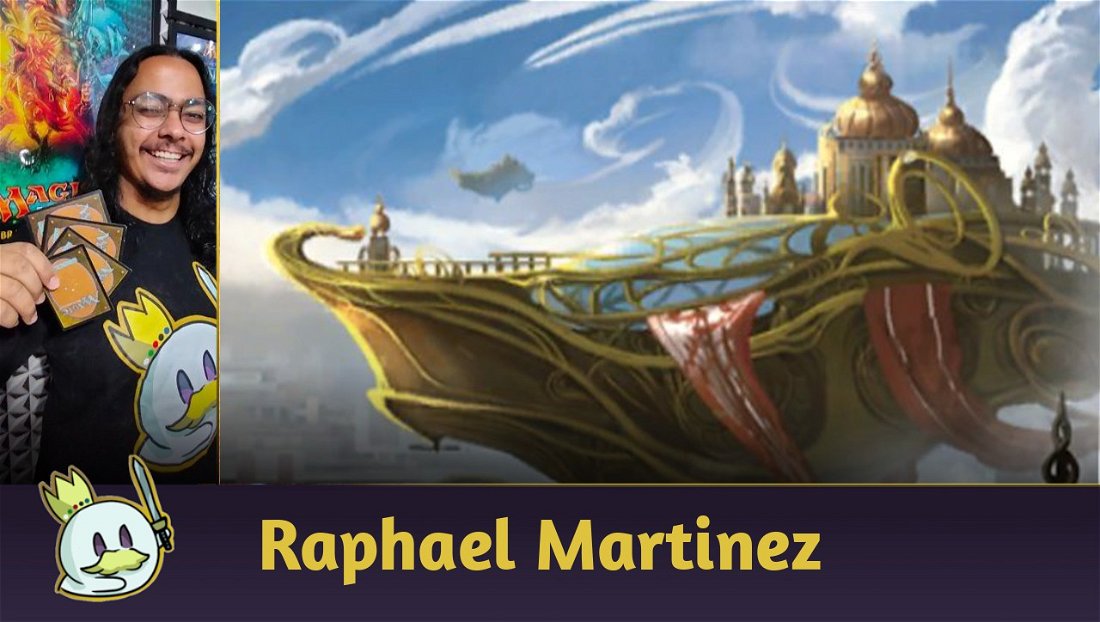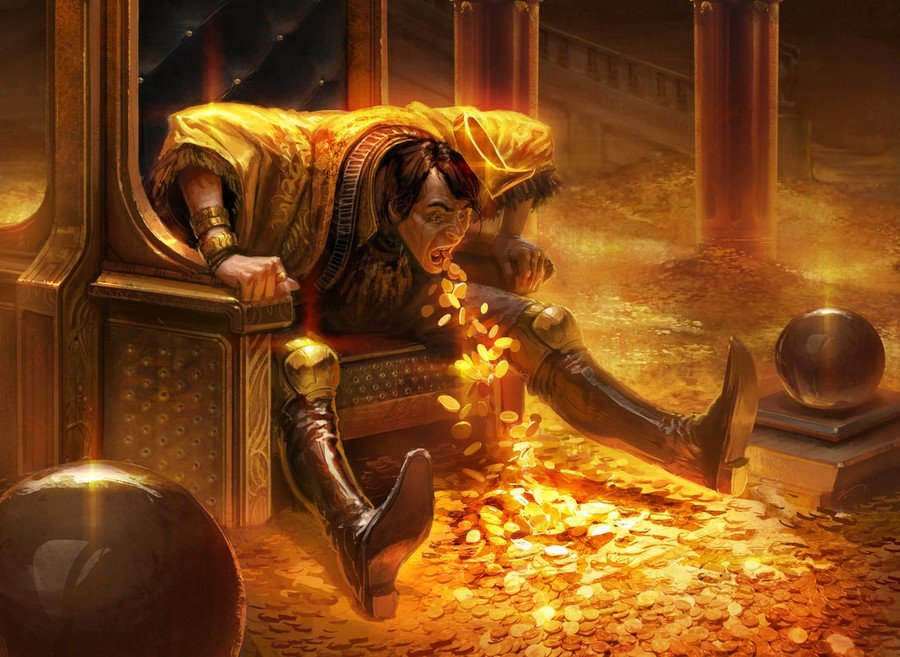Presentation
We're back with another Deck Tech, and this time the menu has shellfish for breakfast!
When Legacy was still in its early years, one of its first big events was the third day of the 2007 Worlds in New York. Among the Canadian Thresholds, Goblins and Deadguys of life, a new archetype appeared , motivated by a change in the rule that made Tarmogoyf's power and toughness to be the same in all zones of the game (before, it was only on the Battlefield).
This was a deck that attacked from an angle like a Combo, looking to put a Cephalid Illusionist into play and use Nomads en-Kor or Shuko to put your entire deck in the graveyard and reanimate a Sutured Ghoul, conveniently enchanted with Dragon Breath and stocked with Tarmogoyf corpses for a single lethal attack; and, on the other hand, it had a plan B of using those same Goyfs to attack and kill the opponent with its Control elements. It was the Cephalid Breakfast.
Years passed, and the archetype evolved and returned to the Legacy's spotlight. Gone are Tarmogoyf and Sutured Ghoul, traded in for the simplicity of Thassa's Oracle and the plan B became Stoneforge Mystic, which conveniently serves as both a tutor for part of the combo and as a way to make Kaldra Compleat steal some wins.

The Cephalid Breakfast
For a long time, it was common for players to name combo decks after breakfast cereals like Trix or Fruity Pebbles.
The craze was expanded to nonsensical things like Full English Breakfast (Volrath's Shapeshifter + Phage, the Untouchable) and fatally when someone had the brilliant to create a deck with Cephalid Illusionist, logic dictated what should be a Cephalid Breakfast!

The combo is quite simple: unite Cephalid Illusionist with some 0 cost effect that targets your creature to mill three cards. Repeat until you get bored.
The cards that allow this interaction are Nomads en-Kor and Shuko. The first has the advantage of its ability being able to be used with instant speed, which doesn't allow the opponent to simply remove the Cephalid in response. The equipment is limited to sorcery-speed, but otherwise can be found easily with Urza's Saga or Stoneforge Mystic.

Once your entire deck has been dropped into the Graveyard, some Narcomoeba jump to the board, you sacrifice them to pay the Flashback for Dread Return, targeting Thassa's Oracle.
Some of the creatures can also be sacrificed to Cabal Therapy, both to guarantee a free path for the Combo and to put a key piece in your graveyard that may be in your hand and not in the graveyard.
Deck Construction

The base of the deck is the same as almost all blue decks in the format: 4x Brainstorm, Ponder and Force of Will, plus 4 Daze and 3 Teferi, Time Raveler for extra protection. The combo takes up a significant portion of slots, 15 cards – luckily, most of them can fulfill the double function of pitching to Force of Will.

Rounding out the pack, you have the lands and cards to find the specific pieces – Stoneforge Mystic, Urza's Saga and Step Through. The last slot goes to Kaldra Compleat, which opens up an extra option to win the game, as some decks simply don't have the proper tools to deal with an indestructible Germ with almost as many abilities as a Akroma, Angel of Wrath.
Some decks also run Aether Vial as a way to force the combo against counterspells. Some cards that I will list in the Sideboard options also tend to appear in smaller quantities in some main decks, such as Prismatic Ending, Swords to Plowshares or Flusterstorm. There are also lists that choose to use black for Baleful Strix, often forgoing Stoneforge Mystic in these cases.
Mulligan
In that respect, this deck is very reminiscent of last week's tech, hyperlink: You are a combo deck, but not an explosive combo that needs to go to the throat as soon as possible, but can find the pieces to force the victory.
Taking that into account, Teferi, Time Raveler is the hero of the deck, as once resolved, you have a free path to make your strategy. Stoneforge Mystic to Kaldra Compleat can pressure the opponent, who can end up letting their guard down when trying to deal with the equipment. Just be careful not to rely too much on very reactive hands.
Building the Sideboard
The proposed sideboard has two main guidelines: bolster combo protection and deal with troublesome creatures/permanents.
In the first field, you have access to Force of Negation and Flusterstorm, as well as Hydroblast which serves as an answer to an answer, hitting Pyroblasts that can disrupt your day. On the second team, Swords to Plowshares, Prismatic Ending and Serenity are among the best answers available in the format. Surgical Extraction appears so that you have more weapons to face Graveyard decks.
Among the other options that appear sporadically on sideboards, we can list Brazen Borrower, Containment Priest, Hullbreacher, Minor Misstep, Pithing Needle and Triumph of Saint Katherine. Needle is particularly interesting if you think you're going to face a lot of Faerie Macabre, and it's conveniently found with Urza's Saga.
Sideboard Guide
UR Delver
Against Delver, side in your removals, as they can pressure your life total quickly.
Force of Will is a tempting target for their Pyroblast, and the plan to make Kaldra Compleat carry the game turns out to be more common than it seems, as long as you can keep their creature out of combat for long enough.
On the draw, you can also trade some Daze for Hydroblast.
IN

OUT

White Initiative
Chalice of the Void gets in the waay, but doesn't counter the Combo, as you can still get Shuko in play through other means.
Post-side, the idea is to hold off their threats, but Leyline of the Void locks the combo, so Teferi, Time Raveler and Serenity are important to unlock their actions. They have plenty of tools to deal with Kaldra Compleat, which makes the game quite difficult.
IN

OUT

Reanimator
On Game 1, luckily for you, a quick Griselbrand or Atraxa, Grand Unifier doesn't mean instant game over, but your combo does.
It's a disruption battle, and Urza's Saga ends up being an important part of finding your combo over counters/discards. Post-side, Teferi and Kaldra are slow, so you go after more cards to hold them off.
IN

OUT

Grixis/Jeskai/Bant/4C
Against these opponents, you focus on plan A, as they have many answers to plan B. Against the variants with red, you can add more Hydroblast instead of Daze.
IN

OUT

Red Prison
Unlike White Initiative, Kaldra usually obliterates their deck.
Post-side, their default answer is Leyline of the Void, so some Teferi can still be useful. Beware of Blood Moon as it kills Urza's Saga.
IN

OUT

Doomsday
It's an tough matchup, as it's common for both to spend plenty of resources trying to force their combos/preventing the other's combo and end up going to a topdeck duel.
Teferi is a bit slow, and while useful for holding their combo with your counterspells, it doesn't do much against discard.
IN

OUT

Conclusion
Here I conclude this trip to the bottom of the ocean (or the graveyard), where a creature with the head of an octopus invokes a merfolk wizard to annihilate the world. See you next time















— コメント 0
, 反応 1
最初にコメントする